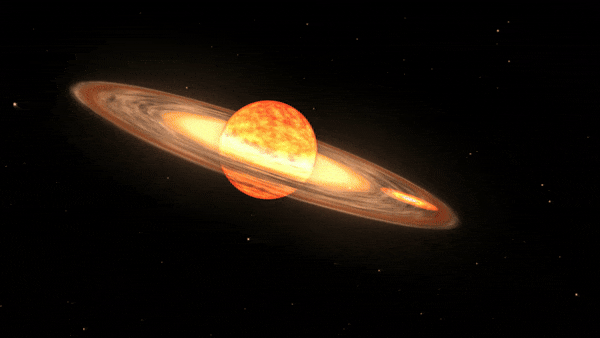
Why the highly-anticipated ‘new star’ has yet to pop up in the night sky (Image Credit: Space.com)
The highly-anticipated “guest star” of the night sky has yet to deliver its grand performance — but we have an update.
For a quick recap, astronomers and stargazers have been gazing toward the Corona Borealis constellation recently, eagerly awaiting the once-in-a-lifetime reignition of a long-dead star in an explosion powerful enough to briefly match the brilliance of Polaris, the North Star. T Coronae Borealis — often called T Cor Bor or T CrB — is home to a white dwarf, a dense, burnt-out star siphoning material from its companion star, which is a massive red giant close to the end of its life. This material spirals into an accretion disk around the white dwarf, where it slowly coats the star’s surface. Every 80 years or so, the white dwarf manages to accumulate enough mass to trigger a nuclear explosion, sparking an outburst that boosts its typically dim magnitude of 10 to a bright 2.0 — that should look like a “new star” in the night sky to us.
Astronomers’ best predictions suggested T CrB was poised to ignite by September. Yet, two months later, the elusive system continues to show signs that an outburst is still imminent. So, what gives?
“We know it has to happen,” astrophysicist Elizabeth Hays, who is watching T CrB every day using NASA’s Fermi gamma-ray space telescope, told Space.com in a recent interview. “We just can’t pin it down to the month.”
Related: A ‘new star’ could appear in the sky any night now. Here’s how to see the Blaze Star ignite
The unpredictability stems partly from limited historical records of T CrB’s outbursts. Only two such eruptions have been definitively observed in recent history: on May 12, 1866, when a star’s outburst briefly outshined all the stars in its constellation, reaching magnitude 2.0, and again on February 9, 1946, when it peaked at magnitude 3.0. These events appear to follow the star’s roughly 80-year cycle, suggesting that the next outburst may not occur until 2026.
However, in February 2015, the system brightened in a manner reminiscent of its behavior in 1938, eight years before its 1946 eruption. This rise in brightness suggested T CrB’s outburst was accelerated to 2023. The system also endured a “unique and mysterious” dimming about a year before its 1946 outburst, and a similar dip started in March last year, prompting astronomers to adjust their predictions to 2024. Yet, the cause of this pre-eruption dip in brightness remains unclear, making it only a coincidental predictor.
“We got really excited when it looked like it was doing similar things,” said Hays. “Now we’re learning, ‘Oh, there’s another piece we can’t see.'”
Moreover, the rate at which the red giant’s material is being drawn toward the white dwarf may fluctuate over the years, making it trickier to put a date on the calendar for the outburst, Edward Sion, a professor of astronomy and astrophysics at Villanova University in Pennsylvania, told Space.com.
The white dwarf and its red giant companion are also separated by just 0.5 AU, or half the average distance between Earth and the sun, and this proximity introduces complexities in the accretion process that are not fully understood. “There’s a lot of uncertainty about the actual average accretion rate,” said Sion.
Astronomers are using this waiting period to collect as much data as possible. The last time T CrB erupted, there were no X-ray or gamma-ray telescopes in space, so there is no data from wavelengths other than optical to shed light on what happened before the outburst. Now, the Fermi gamma-ray telescope is just one of many ground- and space-based telescopes closely monitoring the system. NASA’s James Webb Space Telescope, along with Swift, INTEGRAL, and the ground-based Very Large Array in New Mexico, are all involved in the effort.
These telescopes will not only capture the moment of the outburst when it occurs but will also track its subsequent decline into the depths of space. Astronomers say this wealth of data will allow them to better predict future outbursts, and will eventually benefit models of how stars work.
“This time is really the most important,” said Hays. “We’re getting the best dataset we’ve ever had on what does nova look like before it goes off.”
Right now, astronomers are poring over available data, looking for any hint of an impending outburst, but “you have to be careful not to overinterpret,” Hays added. “Some things we see change might not necessarily have anything to do with how quickly the outburst is going to start — maybe just the weather in the system.”
So for now, the wait continues. T CrB is typically so faint it’s visible only through telescopes, beyond the reach of the unaided eye. Astronomers and eager stargazers alike are watching it closely, poised to both marvel at and catalog its eruption into the brilliant nova it promises to become.






